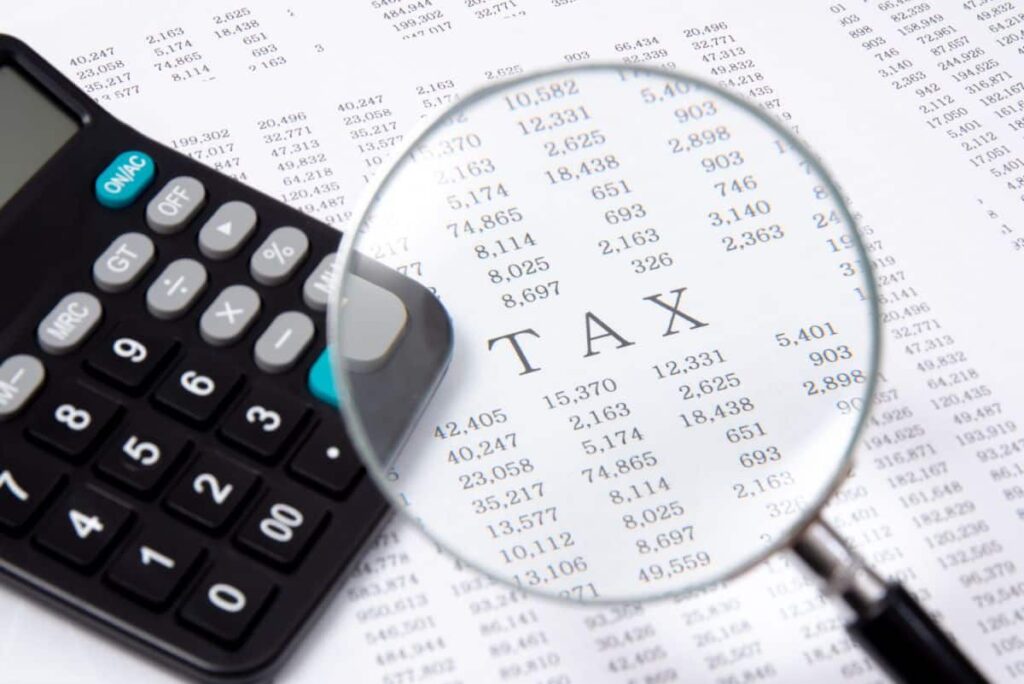Australian Corporate Taxation Laws
When it comes to the regulations governing the taxes of corporations in Australia, all of the country’s enterprises have a few responsibilities that they must fulfil. In this post, we will provide a few pointers on how to remain on top of your tax obligations and provide a brief overview of the fundamentals of Australia’s corporate tax system.
Read on to learn everything you need to know about the taxation of corporations in Australia, regardless of whether you’re just starting out as a business owner or are seeking a refresher course.
If you’re an Australian firm, it’s crucial to be informed of the country’s corporate taxation regulations. Here is a concise summary of the fundamentals to help you ensure that you are in compliance with the requirements. The tax rate on corporations in Australia is thirty percent, which is a fairly high rate in comparison to the rates in other countries.
However, there are a number of exemptions, deductions, and concessions that companies can take advantage of to decrease the amount of taxes that they owe. Expenses related to depreciation and research & development, for instance, can typically be deducted from a company’s taxable income.
In addition, small enterprises that meet certain requirements are eligible for significant tax exemptions on capital gains. Therefore, if you are considering launching a new company in Australia or expanding an existing one, it is in your best interest to become conversant with the intricacies of the country’s corporate tax structure.
Did you know that the Australian government levies corporation taxes that are among the highest in the world? In this piece, we take a look at the present corporate taxes regulations in Australia and analyze how they might be hurting firms both large and small. We also share the best advice we have for lowering the amount of taxes that your business owes so that you can hang on to more of the money you’ve worked so hard to earn.
It is essential to maintain current knowledge of Australia’s corporate tax rules if you are the owner of a company in the country or an executive working for one. Because the regulations that regulate how much tax your firm is required to pay can be difficult to understand and difficult to follow, it is always a good idea to talk with an accountant or an attorney. In this article, we will provide you with an overview of the most important aspects of Australian corporation tax legislation in order for you to ensure that your company is in compliance with the law.
There are a lot of facets of Australian tax law that might make it difficult to understand for business owners. However, it is essential to have a foundational understanding so that you can maximize the potential of your company and pay the appropriate amount of tax. This blog article will provide an overview of some of the most important aspects of Australia’s corporate taxation system. In addition to that, we are going to offer some guidance on how to maintain legal compliance.
Did you know that the tax rate that applies to corporations operating in Australia is different from the tax rate that applies to firms operating in other countries? This is due to the fact that Australia has a “flatter” corporate tax rate, which indicates that all companies pay the same proportion of tax on their profits regardless of how much they make. This could be beneficial for smaller companies that are engaged in competition with larger organizations.
It is essential for a person who resides in Australia to have a solid understanding of the company taxes rules that govern the country. This article will provide an overview of the most essential components of Australia’s business taxation system, including the various tax rates and deductions that are available. If you have a good understanding of these regulations, you will be able to ensure that your company is doing its operations legally and is taking advantage of all tax deductions that are applicable to it.
It is possible that you will be compelled to pay Australian corporate tax, however, this will depend on the nature of your business. This article offers a concise summary of the corporate tax system in Australia and discusses how it might be relevant to the operations of your company. Please keep in mind that the material provided here is of a general nature and not intended to serve as legal advice. If you have any specific questions regarding your taxes, you should talk to an accountant or a lawyer as soon as possible.
Did you know that the regulations that control the taxation of corporations in Australia are considered to be among the most progressive in the world? In the following paragraphs, we will investigate what it makes the Australian corporate tax system so distinctive, as well as the ways in which it impacts enterprises of all sizes.
We will also talk about some of the recent changes that have been made to Australia’s corporate tax rules and how those changes may have an effect on your company. Continue reading if either you are simply interested in learning more about corporate taxation or you are searching for guidance on how to ensure that your business is in compliance with Australian law.
Let’s get started!
Withholding Taxes
Except in the case where they are paid out of profits that have not been subject to Australian tax, dividends given to non-residents are not subject to dividend withholding tax (i.e. unfranked dividends). When we talk about dividends, we’re referring to taxable stock dividends as well.
The rates that are displayed are applicable to dividends received on portfolio investments as well as substantial holdings, excluding dividends received in connection with an Australian personal entity held by a non-resident. When a firm declares its dividends to be conduit foreign income, those dividends are exempt from dividend withholding tax (DIVIDEND WHT) even if they are unfranked and given to non-resident shareholders.
A deduction may also be available in some circumstances in order to compensate for the company tax that is imposed on inter-entity distributions. These are additional payments made by holding corporations to a non-resident parent company that holds 100 percent of the company’s shares (see Dividend income in the Income determination section).
The dividends that are paid to a non-resident in connection with an Australian PE are taxable to the non-resident on a net assessment basis, which means that the dividend and any related deductions will need to be included in the process of computing the non-taxable resident’s income. The dividend is exempt from the dividend withholding tax). On the other hand, the non-resident firm is eligible for a franking tax offset for any franked dividends that it has received.
Although the treaty may allow for a higher maximum limit, the interest WHT rate that Australia can charge is capped at 10 percent of the country’s total gross interest. If you pay your interest on certain public issues or issues of debentures that are widely held, you may be eligible for an exemption from the Australian WHT.
There are provisions in place to guarantee that any discounts or other financial benefits obtained by non-residents on various forms of financing will be subject to interest WHT. When offshore banking units pay interest to non-residents, the interest is exempt from interest WHT as long as the money was borrowed offshore and was utilized for offshore banking activities (including lending to non-residents).
Borrowing money from either I a non-resident who is not linked to the borrower in any currency or (ii) a resident who is related to the borrower in a currency other than Australian currency is considered offshore borrowing. In most cases, interest on WHT loans is calculated using the rates that are indicated above for citizens of treaty countries. It is usual practice for Australia’s tax treaties to specify a lower cap on the amount of taxation that can be levied on interest income collected by particular government organizations and financial institutions. For further information on these restrictions, one should consult the appropriate treaties.
Royalties that are paid to non-residents (with the exception of a permanent establishment in Australia belonging to a citizen of a treaty country) are subject to a WHT rate of thirty percent (calculated on the total amount of the royalty), unless a DTA stipulates a lower rate of. The proportion of the total royalties that is shown as being subject to tax is typically the maximum that applies.
The limit is 10 percent for dividends originating in Australia that are franked in accordance with the terms of Australia’s dividend imputation system and are paid to an individual who directly possesses at least 10 percent of the company’s voting power (although note that Australia does not impose WHT on franked dividends).
The restriction is set at 10 percent for dividends originating in Argentina that are given to an individual who owns at least 25 percent of the total capital of the company. Other dividends are subject to a maximum cap of 15 percent.
The tax that must be paid in the country of origin is capped at ten percent of the total gross amount of royalties related to the copyright of a literary, dramatic, musical, or other artistic work; the use of industrial or scientific equipment; the supply of scientific, technical, or industrial knowledge; assistance that is ancillary to the aforementioned; or certain forbearances in respect to the aforementioned.
When appropriate technical help is provided, the tax imposed by the source country is capped at 10 percent of the net royalties. In all other circumstances, the amount is capped at 15 percent of the total gross amount of royalties.
When an inter-corporate dividend is paid when the receiver directly possesses 80 percent or more of the voting power in the corporation that is distributing the dividend, the WHT rate is 0 percent. The maximum rate that can be applied to any other type of inter-corporate dividend is five percent, provided that the beneficiary directly controls at least ten percent of the voting power held by the corporation that is paying the dividend.
Every other type of dividend is subject to a rate of 15 percent. A rate ceiling of ten percent is imposed on interest, with the exception that a source country does not levy tax on interest earned by a financial institution with a residence in another country, the government, a political or administrative subdivision, a local authority, or the central bank of another country. This exemption applies to interest earned by any of these entities.
The definition of royalty does not apply to amounts that are earned from equipment leasing (including certain types of container leasing). Instead, these amounts are considered to be earnings from international transport operations or company operations.
Tax Administration

1. Taxable period
The beginning of the Australian tax year is on July 1 and ends on June 30. Nevertheless, a company can submit a request to adopt a different fiscal year, such as one that runs from 1 January to 31 December, if it prefers.
2. Tax returns
The Australian Taxation Office (ATO) is able to rely on the information that is presented on a corporation’s tax return if the return is lodged or filed in accordance with a self-assessment method. This applies to the head company of a consolidated tax group as well. In situations in which a company is uncertain about the amount of tax it must pay on a particular item, it may request that the ATO investigate the situation and receive a legally binding private judgement.
In most cases, a corporation’s tax return needs to be submitted to the ATO by the 15th day of the seventh month following the end of the relevant income year. However, the Commissioner of Taxation may permit the return to be submitted at a later date in certain circumstances. However, if the tax return is lodged or filed by a registered tax agent, you may be eligible for an extension of the deadline.
3. The remittance of taxes
A PAYG instalment system is applicable to businesses that are not registered for GST, with the exception of businesses with an annual tax liability of less than AUD 8,000. The vast majority of businesses have the legal requirement to make tax payments on a monthly or quarterly basis for the current income year. Every month, instalments are due from any and all businesses that have a monthly revenue of at least AUD 20 million.
The amount of an instalment is determined by taking the amount of the company’s real ordinary income (without taking into account any deductions) for the preceding quarter and applying an instalment rate to that amount. The ATO is responsible for notifying the taxpayer of the instalment rate, which is established with reference to the total amount of tax that is owed for the most recent assessment.
During the course of the year, the ATO may issue a notification of a new rate that must be used to calculate subsequent instalments. Taxpayers have the ability to choose their own instalment rate; nevertheless, there is a possibility that they could be subject to a penalty tax if their rate is less than 85 percent of the rate that they should have chosen.
The last instalment of the tax owed is due on the first day of the sixth month after the end of the income year in question, or on such later date as the Commissioner of Taxation may authorize by means of a notification that is made public.
4. Tax audit process
Self-assessment is the foundation of Australia’s corporate tax system; nevertheless, the Australian Taxation Office (ATO) is responsible for ensuring continuous compliance to ensure companies are meeting their tax obligations.
The notion of justifiable trust, first developed by the OECD, has been adopted by the ATO. It will seek objective evidence that would lead a reasonable person to believe that a particular taxpayer paid the proper amount of tax, and it would adjust its approach to providing assurance based on the particular business characteristics of a taxpayer.
This generally means that the ATO will take a risk-based approach to compliance and audit activities, with efforts generally focused on taxpayers who have a higher likelihood of non-compliance and higher consequences (generally in dollar terms) of non-compliance. In other words, the ATO will take a risk-based approach to compliance and audit activities. Activities related to compliance can take a number of different forms, such as broad risk reviews, questionnaires, reviews of particular issues, and audits.
5. The applicable restrictions statute
In most cases, the Commissioner of Taxation has the ability to make adjustments to an assessment for a corporation within four years of the date on which the assessment was initially provided to the company. On the other hand, according to the system of self-assessment, the day that the company files its tax return is considered to be the day that it has been provided with an assessment.
In the event that the Commissioner suspects that there has been fraud or tax evasion, or in order to give effect to a judgment made on a review or appeal, or as a result of an objection raised by the firm, or while a review or appeal is continuing, the four-year time restriction will not apply.
A two-year amendment period is applicable for certain small business entities as well as medium business entities (i.e., those with an aggregated turnover of between AUD 10 million and AUD 50 million) beginning with assessments for income years beginning on or after July 1, 2021. Both of these groups are defined by having an aggregated turnover of between AUD 10 million and AUD 50 million.
An assessment that is made to give effect to a transfer pricing adjustment that was raised for an income year beginning on or after June 29, 2013, is subject to a review period of seven years.
6. Areas of concentration for the tax authorities
The Australian Taxation Office (ATO) operates a program known as “Top 1000,” the purpose of which is to collect extra evidence with the intention of ensuring that the largest 1,000 public and international corporations in Australia are declaring the appropriate amount of income tax and GST.
This program is meant to bolster and broaden ATO’s already established compliance strategies. ATO teams work with each taxpayer, using customised compliance tactics, to ensure that they are submitting the correct amount of income tax or identifying tax risk areas for future action. This is done under the auspices of the program.
The ATO will, on a quarterly basis, announce the compliance emphasis areas that are currently receiving its attention. The Australian Taxation Office is now focusing its attention on the following issues for large and international businesses:
- There is a significant emphasis placed on moving earnings to jurisdictions with lower tax rates as well as ending operations in Australia, with particular attention paid to international business dealings (particularly related-party financing).
- Mergers and acquisitions, the sale of key assets and demergers, buybacks of existing shares, capital raisings and returns of capital, new private equity investments and exits, initial public offerings, and other business events can be categorized as structuring and business events, respectively.
- Taxes on capital gains, losses (capital and revenue), tax consolidation, expenditures on infrastructure, and financial arrangements.
- The goods and services tax (GST), international concerns, and financial supply transactions are also discussed.
- Sharing information and intelligence on potential threats and opportunities, as well as capabilities and strategies, and working together to comply with the regulations of other jurisdictions.
- a tax incentive for R&D.
Tax Return Deadline
In most cases, the due date for submitting your return is the 31st of October.
You have until Monday, November 1 to submit your application because October 31 falls on a Sunday this year.
If you choose to employ the services of a registered tax agent, they will typically have special lodgment schedules and will be able to file returns for clients later than October 31st. If you make use of these services, you can avoid the penalties associated with late filing. If you use a registered tax agent, you are required to hire them before October 31st if you want to avoid penalties.
The Australian Taxation Office (ATO) recommends that you get in touch with them as soon as possible if you are having trouble completing your tax responsibilities or if you are unable to lodge by October 31.
If you file your tax return and it results in a tax bill, payment is needed by the 21st of November, regardless of whether you filed your return before or after the deadline. This is the case even if you filed your return before the deadline.
When it comes to evaluating tax returns, what is the ATO’s primary focus?
The Australian Taxation Office (ATO) has disclosed the goals it has set for the submission of individual tax returns in 2021.
A spokesman for the company stated that it would be increasing its enforcement of:
- work-related expenses (including double-dipping while claiming deductions and claiming work-related expenses that AREN’T linked to work); work-related expenses that aren’t related to work;
- rental properties;
- Bitcoin, property, and stock market investments can all result in substantial gains.
The Second Job Tax Rate in Australia
Because you already have another work from which you are generating income and are claiming the tax-free level, the amount of tax that is withheld from your salary at second employment is typically higher than it is at your first job.
The likelihood of having a tax liability at the end of the income year is decreased by increasing the percentage of money that is withheld from paychecks.
When you start new employment, your employer will provide you with a TFN declaration form for you to fill out and submit.
If you apply for Centrelink’s payments, they will provide you with this form. Centrelink is another organization that makes payments.
When you fill out this form, you will have the option to claim the tax-free threshold from your employer. You can also choose not to claim it.
If you:
- you should not claim the tax-free threshold for your second employment if you are still collecting income from your first employer, even if this income is through the JobKeeper Payment;
- if you are no longer generating any income (even from paid leave), you have the right to claim the tax-free threshold from your second employment and have a lower rate of tax withheld; if you are no longer working, you have the right to claim the tax-free threshold from your second job.
- Start collecting income from both employers; if you want to avoid owing money to the government at the end of the year, you can ask one of your companies to withhold taxes at a higher rate.
How to connect your MyGov account to the Australian Taxation Office
Simply navigate to your myGov account, where you will find a list of services, and choose ATO from the drop-down menu. This will link your myGov account to the ATO.
Choose the “Questions specific to you” option for the quickest and easiest solution possible. You will just need your Tax File Number (TFN) and two other basic pieces of information, such as the details of your bank account and membership in a superannuation program. A comprehensive list can be found on this page.
The ATO advises that you choose the questions that you want to answer so that you can self-serve. In any other case, you are required to call.
FAQs
1. I run my own business and want to know how to minimise my annual tax bill?
If your turnover is less than 50 million dollars, you would be able to access several small business concessions, including:
- income tax concessions;
- excise concessions;
- concessions about the Goods and Services Tax (GST);
- Pay As You Go (PAYG) instalment concessions;
- Provisions on the Fringe Benefits Tax, sometimes known as the FBT.
The requirement of $50 million in annual sales applies to the majority of concessions, with the following exceptions:
- small business payroll must not exceed $5 million to qualify for the small business income tax offset;
- The minimum annual turnover required to qualify for the capital gains tax (CGT) discounts is $2 million.
2. I run a small business and prepaid 12 months’ rent on the premises that I operate from in June. Can I claim the whole amount on my tax return even though most of the payment is for next year?

If your annual revenue is less than $50 million, you may be allowed to deduct some of your qualified prepaid expenses in the same year that they were paid for.
Rent, insurance, and membership dues to professional organizations are a few examples of prepaid expenses that can be deducted from your taxes in the year they were paid.
The term “eligible expenses” refers to payments that have been made for a period of 12 months or less, with the covered period ending in the following income year. For instance, the period that your prepaid rent covers does not extend beyond 12 months, and that term will come to a close before the conclusion of the following income year, so it is eligible. Because of this, the entire amount will be deductible on your tax return for the current year.
3. My job requires me to purchase several tools and pieces of equipment. How much may I deduct from my taxes?
You are allowed to deduct any costs that you have expended in maintaining, repairing, or replacing the tools of your profession that you employ to bring in money. Depreciation will have to be done, however, on any item with a price tag that is higher than $300. (i.e. claimed over its useful life).
Your ability to make a claim for a refund will be proportional to the number of receipts you have maintained and the degree to which you put those receipts toward making money. If you find yourself in a position where you do not have your receipts and are wondering what you can claim, you can make a claim for anything costing less than $300 even if you do not have evidence of purchase.
4. Because of the nature of my work, which calls for me to spend a significant amount of time travelling, I am obliged to make use of my own vehicle. What steps do I need to do in order to take a tax deduction for my car?
There are two distinct approaches to deducting costs associated with using a vehicle for work, and each of these approaches necessitates different kinds of record-keeping. It is recommended that a logbook, as well as all receipts for spending, be kept in order to adopt the strategy that will provide you with the highest possible return on your investment (e.g. insurance, registration, repairs, services, tyres, etc.).
You are not required to preserve the receipts for the gas that you purchase because we are able to compute that amount for you using a method that takes into account the yearly average. It is recommended that you keep your logbook for a minimum of twelve weeks in a row, and in general, it will be valid for five years unless there are substantial changes in your circumstances. Additionally, you are required to record both the beginning and ending odometer values for each year.
You are not required to make a claim, in the same way, year after year. The choice of method, on the other hand, ought to be determined by which of the two is more advantageous to you and for which of the two you already possess the necessary records.
You won’t have as many options to choose from if you don’t have an up-to-date logbook or if you’ve thrown away some or all of your receipts. If, on the other hand, your car is included in your wage package, you will be unable to deduct any costs related to your vehicle.
5. Does my company need me to dress a certain way when I’m on the job? What deductions would I be able to take on my taxes?
If your job requires you to wear a uniform, and that uniform identifies you as a member of a certain organization or as an employee in a specific occupation, then the cost of that uniform may be tax-deductible.
A requirement to wear specific colours is not sufficient to make the clothing deductible (for example, a waiter is forced to wear black and white attire); similarly, a requirement to wear a store’s brand of clothing is not sufficient to make the clothing deductible (they are still conventional clothing and not tax-deductible).
The use of corporate wardrobes can also be tax-deductible, provided certain criteria are met. For instance, the uniform design has to be registered with AusIndustry in order to be worn. You may also deduct the costs of maintaining the apparel if it qualifies for a tax deduction (laundry, dry cleaning, and repairs).


















